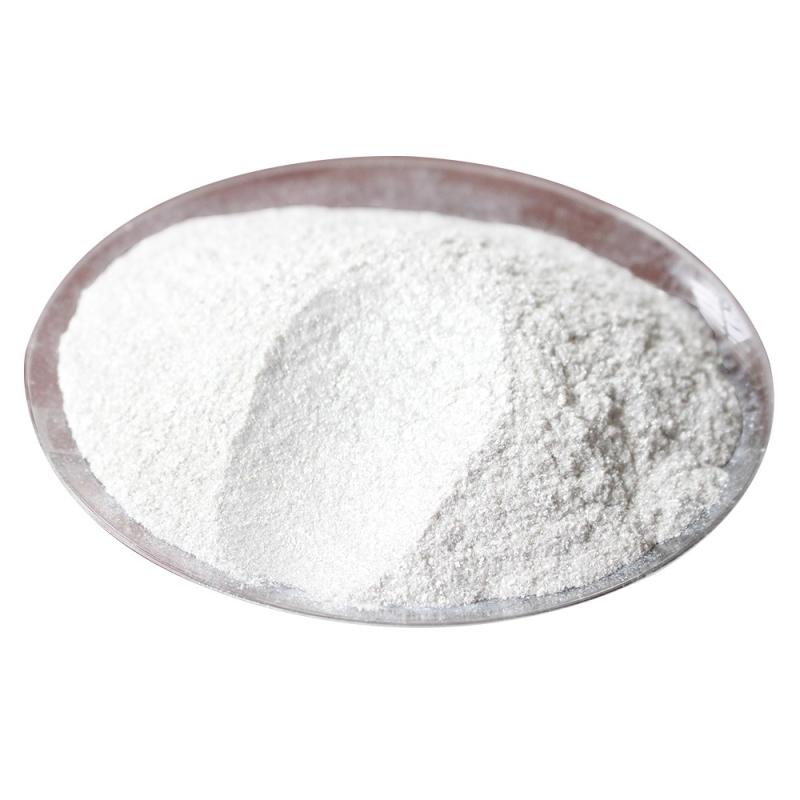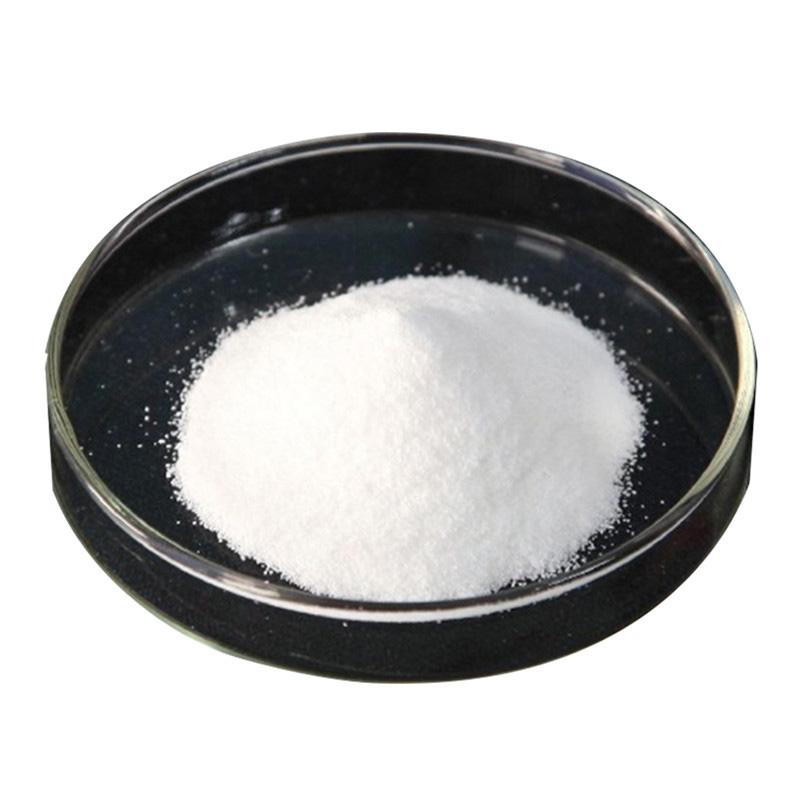Common name: ProchlorazChemical name: N-propyl-N-[2-(2,4,6-trichlorophenoxy)ethyl]-1H-imidazole-1-carboxamideMolecular formula: C15H16Cl3N3O2Structural formula:Molecular weight: 376.67CAS No. : 67747-09-5Product description:Prochloraz, also known as Promethazine, Promethazine, Shibaoke, and Prochloraz, is an imidazole broad-spectrum pesticide fungicide, which acts by inhibiting the biosynthesis of sterols. Although it does not have a systemic effect, it has certain conductivity properties.
Contacta ahora
Product description:Prochloraz, also referred to as promethazine, promethazine, shibaoke, and prochloraz, is an imidazole enormous-spectrum pesticide fungicide, which acts via inhibiting the biosynthesis of sterols. even though it does not have a systemic effect, it has sure conductivity residences. it has apparent control impact on diverse plant life because of ascomycetes and semi-chemicalbook micro organism. it may moreover be mixed with most fungicides, insecticides, and herbicides, and has appropriate manage consequences.
Contacta ahora
Alachlor is an herbicide from the chloroacetanilide family. It is an odorless, white solid. The greatest use of alachlor is for control of annual grasses and broadleaf weeds in crops. Use of alachlor is illegal in the European Union and no products containing alachlor are currently registered in the United States.Its mode of action is elongase inhibition, and inhibition of geranylgeranyl pyrophosphate (GGPP) cyclisation enzymes, part of the gibberellin pathway. Common name: AlachlorChemical name: 2-chloro-N-(2,6-diethylphenyl)-N-(methoxymethyl)acetamide; Molecula
Contacta ahora
Common name: AvermectinChemical name:abamectin (combination of avermectin B1a and avermectin B1b) Molecular formula: C49H74O14Structural formula: Molecular weight: 887.11CAS No. : 71751-41-2Product description:It can kill mites and insects, but not eggs. The mechanism of action is different from the general insecticide is to interfere with neurophysiological activities, stimulate the release of γ -aminobutyric acid, and aminobutyric acid on arthropod nerve conduction inhibition.
Contacta ahora
Fibulonil can result in cl- float by way of blocking off the cl- channel of the nerve membrane managed by way of γ -aminobutyric acid receptor, which causes excessive excitement of the apprehensive gadget and results in the dying of the insect frame, as a result attaining the prevention and manipulate impact of various monetary pests.Common name: FIPRONILChemical name: 5-amino-1-[2,6-dichloro-4-(trifluoromethyl)phenyl]-4-[(trifluoromethyl)sulfinyl]-1H-pyrazole-3-carbonitrileMolecular formula: C12H4Cl2F6N4OSStructural formula: Molecular weight: 437.15CAS No.
Contacta ahora
Product description:Z-cis-cyfluthrin is an intermediate for the preparation of lambda-cyhalothrin (cyfluthrin), tefluthrin, bifenthrin and other pyrethroids.Utilization:The lambda cyhalothrin acid fluorine-containing intermediate is one of the varieties of chrysanthemum acid, that is an essential intermediate for the synthesis of pyrethroid insecticides.
Contacta ahora
Product description:emamectinbenzoate, emamectinbenzoate for brief, it is the result of the derivatization observe on the hydroxyl institution of four "-(α -1-zetan fructose-organization)-α -1-zetan fructose with the aid of merck in 1984.
Contacta ahora
Product description:Fenvalerate is a synthetic pyrethroid insecticide. it is a aggregate of 4 optical isomers that have one-of-a-kind insecticidal sports. the 2-s alpha (or ss) configuration, referred to as esfenvalerate, is the maximum insecticidally lively isomer. fenvalerate includes about 23% of this isomer.Fenvalerate is an insecticide of moderate mammalian toxicity. In laboratory animals, central nervous system toxicity is observed following acute or short-term exposure.
Contacta ahora
Product description:Imidacloprid is a systemic insecticide belonging to a category of chemicals referred to as the neonicotinoids which act on the significant apprehensive system of bugs. the chemical works via interfering with the transmission of stimuli in the insect nervous machine. in particular, it causes a blockage of the nicotinergic neuronal pathway. by blockading nicotinic acetylcholine receptors, imidacloprid prevents acetylcholine from transmitting impulses between nerves, ensuing inside the insect's paralysis and eventual death.
Contacta ahora
Common name: TebuconazoleChemical name:1-(4-Chlorophenyl)-4,4-dimethyl-3-(1,2,4-triazole-1-yl-methyl)pentane-3-olMolecular formula: C16H22ClN3OStructural formula: Molecular weight: 307.82CAS No. : 80443-41-0Product description:Tebuconazole is a kind of high efficiency, broad spectrum, internal absorption triazole bactericidal pesticide, with three functions of protection, treatment, eradication, wide bactericidal spectrum, long duration of efficacy. It was found that tebuconazole, like all triazole fungicides, could inhibit the biosynthesis of ergosterol from fungicide.
Contacta ahora
Common name: DimethomorphChemical name:(E,Z)4-[3-(4-chlorophenyl)-3-(3,4-dimethoxyphenyl)acryloyl] morpholineMolecular formula: C21H22ClNO4Structural formula:Molecular weight: 387.86CAS No. : 110488-70-5Product description:It is a special fungicide of the class of oomycetes. Its function is to destroy the formation of cell wall membrane. It has an effect on all stages of the life history of oomycetes. It is especially sensitive in the formation stage of sporangia stems and oospores, at very low concentrations. Down (<0.25μg/ml) is inhibited.
Contacta ahora
Product description:It is a unique fungicide of the elegance of oomycetes. its function is to spoil the formation of cellular wall membrane. it has an effect on all tiers of the existence history of oomycetes. it's far in particular sensitive in the formation stage of sporangia stems and oospores, at very low concentrations. down (<0.25μg/ml) is inhibited. no move-resistance to phenylamides.Common name: DimethomorphChemical name:(E,Z)4-[3-(4-chlorophenyl)-3-(3,4-dimethoxyphenyl)acryloyl] morpholineMolecular formula: C21H22ClNO4Structural formula:Molecular weight: 387.86CAS No.
Contacta ahora
Product description:Propolachlor, also referred to as saufort, is mainly used for directly sown rice fields. it has the traits of secure rice boom, extensive weed control spectrum and proper weed manage impact. it could essentially manipulate the damage of weeds in the whole boom length.
Contacta ahora
MF: C22H17N3O5MW: 403.39CAS: 131860-33-8 Physical and chemical properties:Density: 1.33 g/cm3Melting point: 118-119 ℃Boiling point: 581.3 ℃Flash: 305.3 ℃Appearance: white crystalline powderUsage :because of its prevention and cure of bacteria ester disease range is wide, suitable for wheat, corn, rice and other food crops, peanut, sesame, tobacco, cotton and other economic crops, tomato, watermelon, cucumber, eggplant, chili, vegetable crops, such as apple, pear, kiwi fruit, mango, litchi, longan, banana and other fruit trees, medicinal herbs, flowers, such as hundreds of crops.Its e
Contacta ahora
Common name: MancozebChemical name: Coordination compound of 1,2-ethylenebisdithiocarbamate manganese and zinc ionMolecular formula: C4H8MnN2S4Zn Structural formula:Molecular weight: 332.71CAS No. : 8018-01-7Product description:The pure product of mancozeb is white powder, and the industrial product is off-white or light yellow powder with the smell of rotten eggs. It is hardly soluble in water, insoluble in most organic solvents, soluble in pyridine, and unstable to light, heat, and humidity.
Contacta ahora
Common name: BETA-CYPERMETHRINChemical name: Cyano(3-phenoxyphenyl)methyl 3-(2,2-dichlorovinyl)-2,2-dimethylcyclopropanecarboxylateMF: C22H19Cl2NO3MW: 416.29716CAS: 86752-99-0Structural formula: Product description: Beta-cypermethrin is a pyrethroid pesticide, which is a kind of synthetic pesticide similar to natural pyrethrin in structure. Its molecule is composed of two parts: inulin and alcohol.Beta-cypermethrin is used to control agricultural pests by touching and gastric toxicity.
Contacta ahora
Product description:Tebuconazole is a sort of high performance, large spectrum, inner absorption triazole bactericidal pesticide, with three capabilities of safety, remedy, eradication, huge bactericidal spectrum, long length of efficacy. it became located that tebuconazole, like several triazole fungicides, could inhibit the biosynthesis of ergosterol from fungicide. tebuconazole is used as seed treatment agent and foliar spray all over the global. it has a extensive bactericidal spectrum, excessive activity and long length of efficacy.
Contacta ahora
Common name: GlufosinateChemical name: 2-Amino-4-[hydroxy(methylphosphonoyl)]butanoic acidMolecular formula: C5H18N3O4PStructural formula:Molecular weight: 215.19CAS No. : 77182-82-2Product description:Glufosinate-ammonium, also known as glufosinate, is a non-selective foliar spray of organophosphorus herbicide. It was first synthesized and developed by the Federal German Hoechst Chemical Company in 1979.
Contacta ahora
MF: C4H8MnN2S4ZnMW: 332.71CAS: 8018-01-7Melting point of 192-194 ° CDensity of 1.92 g/cm3Vapor pressure, Negligible AT, 20 °CFlash point is 138 ° CStorage condition APPROX 4°CWater solubility 6-20 mgl-1 (20 °C)Product description:Pure mancozeb is white powder, industrial products are gray white or light yellow powder, with rotten egg taste.
Contacta ahora
Chemical name of Indoxacarb products:methyl 7-chloro-2-[methoxycarbonyl-[4-(trifluoromethoxy)phenyl]carbamoyl]-3,5-dihydroindeno[1,2-e][1,3,4]oxadiazine-4a-carboxylate;Physical and chemical properties of Indoxacarb products:Molecular weight : 527.834Density: 1.53Melting point: 139-141 DHS CBoiling point: 571.4ºC at 760 mmHgFlash: DHS 299.3 CMolecular formula :C22H17ClF3N3O7Toxicity of Indoxacarb products(DAPX-MP062) acute transoral: LD50: male 1730mg/kg, female 268mg/kg: rabbit acute transcutaneous LD50: & GT; 5000 mg/kg.
Contacta ahora
Usage:Chlorpyrifos is used in approximately one hundred nations round the world to manipulate insects in agricultural, residential, and business settings. its use in residential packages is limited in more than one international locations. in step with dow, chlorpyrifos is registered for use in nearly one hundred nations and is yearly carried out to approximately eight.five million crop acres. the crops with the maximum use consist of cotton, corn, almonds, and fruit trees, consisting of oranges, bananas, and apples.
Contacta ahora
Product description:Kresoxim-methyl is a exceptionally powerful, wide-spectrum, new fungicide. it has an amazing control effect on strawberry powdery mold, melon powdery mold, cucumber powdery mould, pear scab and different sicknesses. it can manipulate and deal with maximum sicknesses inclusive of ascomycetes, basidiomycetes, deuteromycetes and oomycetes. it has a sturdy inhibitory effect at the germination of spores and the increase of mycelium in leaves, and has defensive, healing and removing activities.
Contacta ahora
Common name: MetalaxylChemical name: methyl2-[(2,6-dimethylphenyl)(methoxyacetyl)amino]propanoateMolecular formula: C15H21NO4Structural formula:Molecular weight: 279.33CAS No. : 57837-19-1Product description:Metalaxyl is an acylalanine fungicide with systemic function.[3] Its chemical name is methyl N-(methoxyacetyl)-N-(2,6-xylyl)-DL-alaninate. It can be used to control Pythium in a number of vegetable crops, and Phytophthora in peas.
Contacta ahora
Common name: EpoxiconazoleChemical name:1-[[3-(2-chlorophenyl)-2-(4-fluorophenyl)oxiran-2-yl]methyl]-1,2,4-triazole Molecular formula: C17H13ClFN3OStructural formula: Molecular weight: 329.76CAS No. : 135319-73-2Product description: Epoxiconazole is a fungicide active ingredient from the class of azoles developed to protect crops. In particular, the substance inhibits the metabolism of fungi cells infesting useful plants, and thereby prevents the growth of the mycelia (fungal cells). Epoxiconazole also limits the production of conidia (mitospores).
Contacta ahora


































